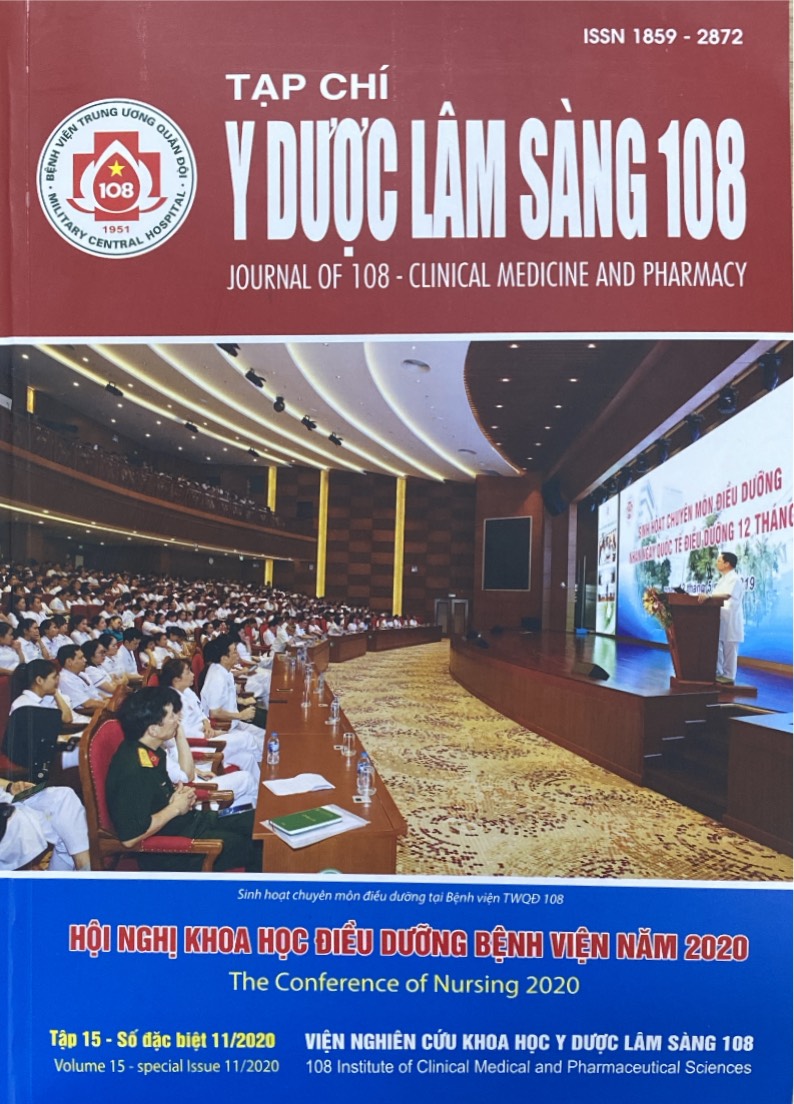The effectiveness of an interventional package for preventing nasal lesion at Neonatal Department of Vinmec Times City General International Hospital in 2019
Main Article Content
Keywords
Abstract
Objective: To present the actual state of nasal lesion and several related factors of neonates on CPAP therapy, simultaneously evaluates the effectiveness of an interventional package for preventing nasal lesion at Neonatal Department of Vinmec Times City General International Hospital in 2019. Subject and method: Using a cross-sectional study design described by quantitative methods on 75 neonates from January 2018 to November 2019. Result and conclusion: The risk of nasal injury was higher in premature birth with prolonged CPAP application than those of full-term newborn with short-term CPAP application. Additionally, the application as well as the compliance to the care package, which include preventive intervention for nasal lesion such as: Use of artificial leather patches and lubricating oil (paraffin), monitoring every 1 hour by nurse, practice of nasal massage every 6 hours, have all contributed to prevent nasal lesion on newborn with CPAP breathing (p<0.05). In time to come, all medical staffs were needed to be trained to have decent knowledge regarding CPAP therapy and know the practice of preventive care package for nasal injury on newborn with CPAP breathing.
Article Details
References
2. Fischer C et al (2010) Nasal trauma due to continuous positive airway pressure in neonates. Arch Dis Child Fetal Neonatal Ed. 95(6): 447-451.
3. Imbulana DI, Manley BJ, Dawson JA, Davis PG, Owen LS (2018) Nasal injury in preterm infants receiving non-invasive respiratory support: a systematic review. Arch Dis Child Fetal Neonatal Ed 103(1): F29-F35.
4. Ota NT, Davidson J, Guinsburg R (2013) Early nasal injury resulting from the use ò nasal prongs in preterm inflants with very low birth weight: A pilot study. Rev Bras Ter Intensiva. 25(3): 245-250.
5. Sue Oliver (2011) RPA Newborn Care Clinical Practice Guidelines.
6. Xie LH (2014) Hydrocolloid dressing in preventing nasal trauma secondary to nasal continuous positive airway pressure in preterm infants. World J Emerg Med 5(3): 218-22.
7. Mahnaz Jabraeili, Mohammad A, Asghar M, Mahmood S, Zakieh S, Sakineh K (2017) The efficacy of a protocolized nursing care on nasal skin breakdown in preterm neonates receiving nasal continuous positive airway pressure. Int J Pediatr 5(1): 4217-4225
 ISSN: 1859 - 2872
ISSN: 1859 - 2872
